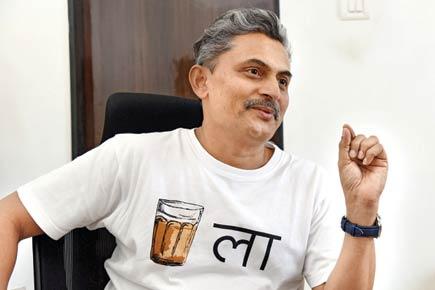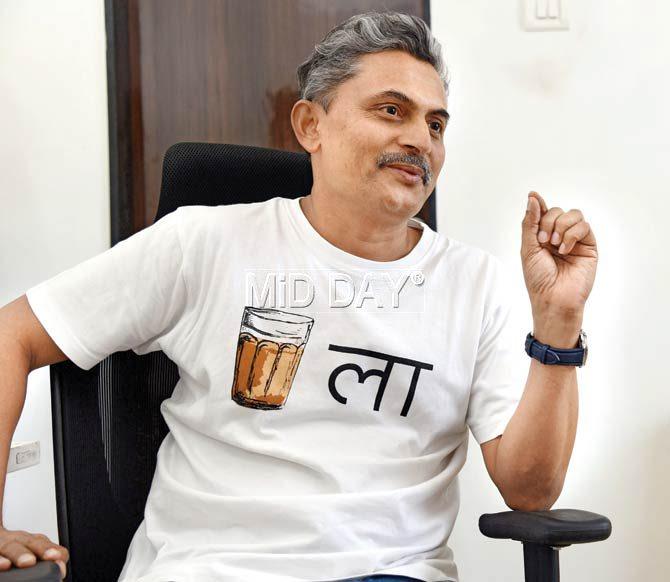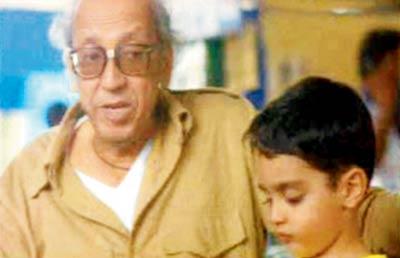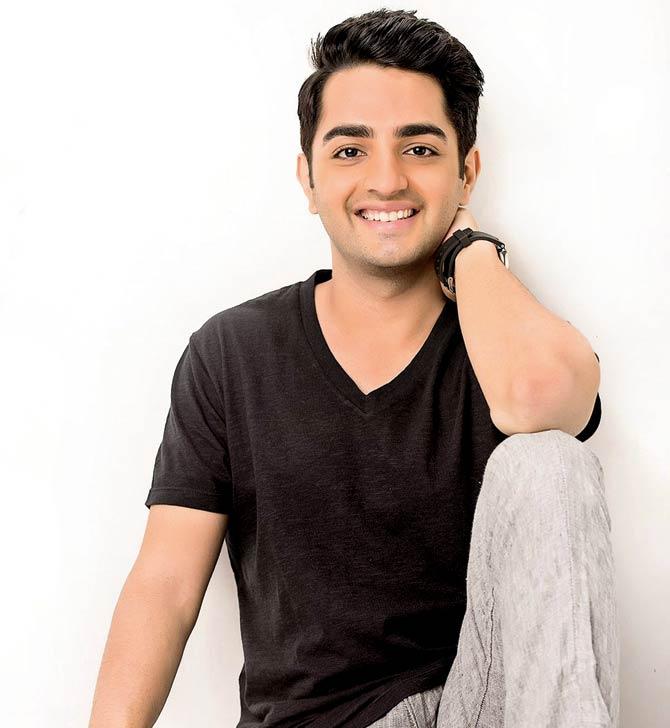An adorable kid, Ramu Kaka, jalebis and magic. We meet the team behind the Dhara commercial, that hit its 20th anniversary recently


Adman Jagdish Acharya at his Andheri office. Pic/Rane Ashish
It was the time just after the economy had opened up. Television sets had still not found their way to many households, and owning a cable connection was a luxury. The Indian consumer had just begun to grasp the meaning of choice. And to introduce him to that, television commercials of the ’90s played such a powerful role that even today, long after they’ve gone off air, they can unleash a flood of emotions at the slightest prompt — be it the Hamara Bajaj jingle, the ‘I love you, Rasna’ punchline, or simply the word, jalebi.
ADVERTISEMENT

Stills from the commercial
A little boy in denim dungarees arrives at the railway station sulking. He’s decided to leave his home because “sab gussa karte hai,” he tells Ramu Kaka, an avuncular character. Ramu Kaka informs him that mummy has cooked “garma-garm jalebiyaan” at home. The kid’s eyes light up. “Jalebi?!” he says with a squeak, salivating. The plan of running away gets scrapped instantly.

If that feels like yesterday, this Dhara Oil ad completed 20 years recently. We caught up with the minds and the face behind the iconic ad to relive their creation.

The Dhara boy all grown up
The conceptualisation
“To give you an idea of how this ad came about, I’ll have to take you back to India’s oil market of the ’80s,” Jagdish Acharya, the brain behind the commercial tell us, seated in his Andheri office. “Edible oil used to be subsidised, but the consumer often fell prey to black marketing and hoarding. The government ultimately asked the National Dairy Development Board (NDDB) to launch an oil brand that could be sold at a fixed price at all times,” he explains.
However, some years later, the oil market, like many other sectors, got deregulated. “But even then, people saw Dhara as a ration-shop oil that had to be cheaper than other brands. The NDDB, however, had to ensure the farmers got the right price. Soon, Dhara sales dropped to a third,” says Acharya.
In 1996, Acharya, who was vice president of the Mudra Group in Ahmedabad and was heading the account management department, (a role far removed from the creative process) was roped in to salvage Dhara. “The NDDB, headed by Dr Verghese Kurien, had been our client for a while and some good commercials had been produced. But this was a crisis and we needed all hands on deck. The brief was simple: do something to motivate people to buy Dhara at competitive prices. Get them to forget the past and reinvent the brand,” he shares.
The making and the glitches
It took months of brainstorming to crack the winning idea — food had to be portrayed as the game-changer in the family, capable of turning around a bad mood and winning emotional battles.
“My idea of a little kid running away from home got approved, but it became what it is because everyone involved pitched in,” recalls Acharya. “The scene was originally supposed to be set at a bus stop, but Namita Roy Ghose and Subir Chatterjee of White Light Moving Picture, the production house that was filming the commercial, suggested that a railway station would be far more romantic. Our external creative consultant, the well-known Kamlesh Pandey, also gave us valuable guidance.”
Acharya’s mother contributed, too. “ ‘Don’t use kachoris to tempt the kid. Children don’t like spicy food, and no one in South India knows what kachoris are. Use jalebis instead,’ she said,” smiles Acharya.
And that brings us to the adorable and expressive child actor, Parzaan Dastur. “We realised on the day of the shoot that for some reason, we couldn’t work with the kid who had been selected for the role. And there was no way we could reschedule the shoot, given the constraints. We knew Parzaan from some earlier assignments we had done with him and he had shown great maturity for his age. We contacted him and he was available,” recalls Roy Ghose.
Finding Parzaan
Dastur, who was four then, fit seamlessly into the role. “It was all completely unplanned. I walked into the Kamalistan Studio right after school, my stomach growling. For the very first scene, I had to grab a handful of jalebis and gorge on them. What else could I have asked for?” says 24-year-old Dastur.
“We were glad that we were allowed the time to let the chemistry develop among the characters. One of the reasons the ad struck a chord was because of the way the bond between Ramu Kaka and Bablu showed,” Roy Ghose explains.
The commercial timed at 50 seconds, much longer than the 30-second TVCs of the time. “But the client loved it and understood the pace the emotion running through the ad required,” says Acharya.
However, soon after it was aired, the Advertising Standards Council of India slapped a notice on the ad agency. Someone had filed a complaint that the ad was a bad influence on children, for it encouraged them to abscond. (Those were the days of children attempting Shaktimaan stunts.) “We sent an explanation saying how our focus was family bonding. The council, it seemed, liked the ad too,” quips Acharya.
Amusingly though, a child of an NDDB employee, who enjoyed watching the commercial, did run away, only to be found shortly after. When the NDDB employees approached Dr Kurien regarding this, his reply was, “Fantastic! That means the ad is working.”
The Dhara TVC went on to air for five years and Acharya felt drawn towards the creative process. In 2009, he started his own agency, Cut the Crap, in Mumbai, where he draws from his experience in both client management and conceptualising storylines. Roy Ghose and Chatterjee continue to make ad films. Dastur decided to take up acting and took a professional course for it. He also learnt filmmaking and worked with Dharma Productions for a while to understand acting from behind the camera. He has worked in a few commercials recently and has auditioned for roles for the big screen. “I don’t know whether my face is still the same or people have a really good memory or both, but even today, people recognise me as the Dhara child,” says Dastur.
Twenty years later
How have things changed in the last 20 years, we ask the Dhara team. “Things have changed and yet, they’re the same. The emotions are the same, even as media has splintered. So, today the Dhara commercial would be much shorter on TV, but can afford to be a two-minute film online,” explains Acharya.
But in this age of media bombardment, would there ever be ads of such recall value? “Back then, a lot of effort went into the story picturisation and the product organically found a spot in it. The screen time given to the actual product in the Dhara ad was no more than a couple of seconds, but everyone recalls the brand. That’s no longer the case and you see a tasteless brand overkill,” says Chatterjee.
Acharya has a different view. “Great commercials are still being made and in much bigger numbers. So, the pause between two good ideas has disappeared. Ten years from now, you may remember one ad, and someone else would remember another,” he says.
That’s perhaps a rational explanation, but we’d like to believe there was a certain magic in the commercials of the ’90s, and the jalebis undoubtedly sweetened those memories.
 Subscribe today by clicking the link and stay updated with the latest news!" Click here!
Subscribe today by clicking the link and stay updated with the latest news!" Click here!







